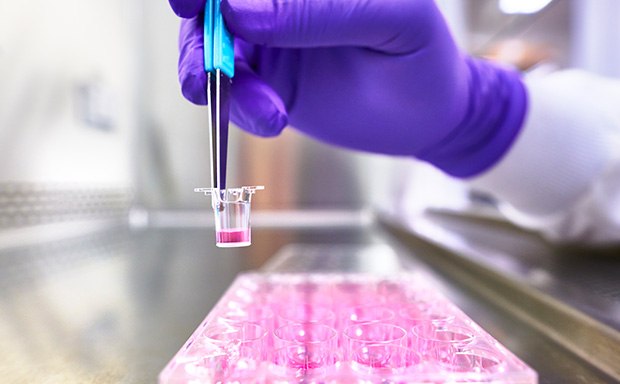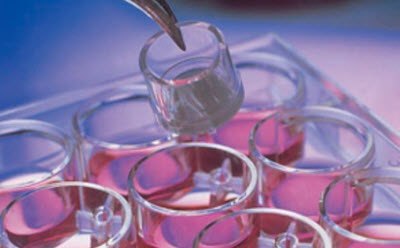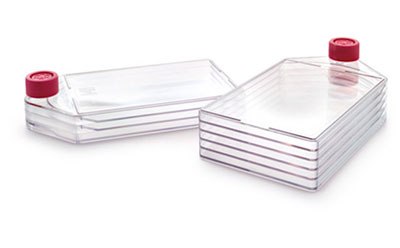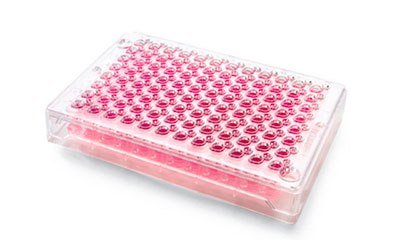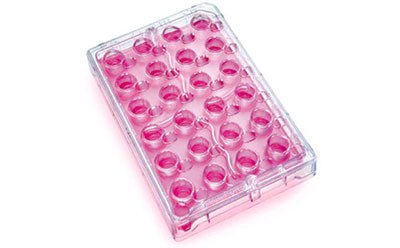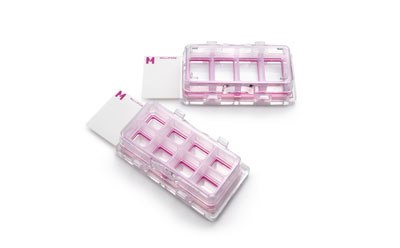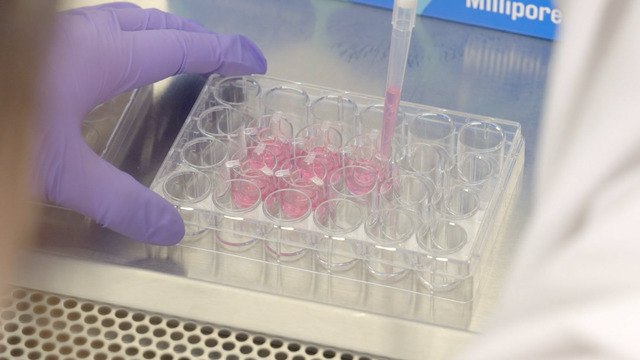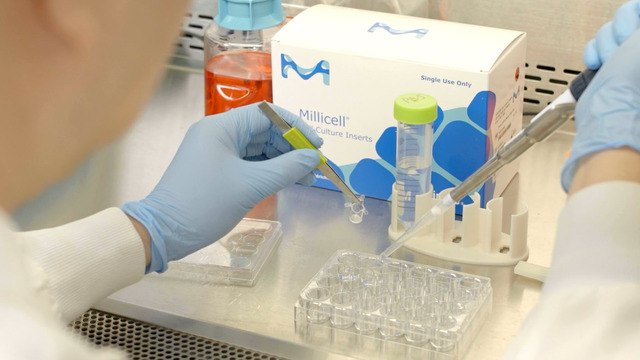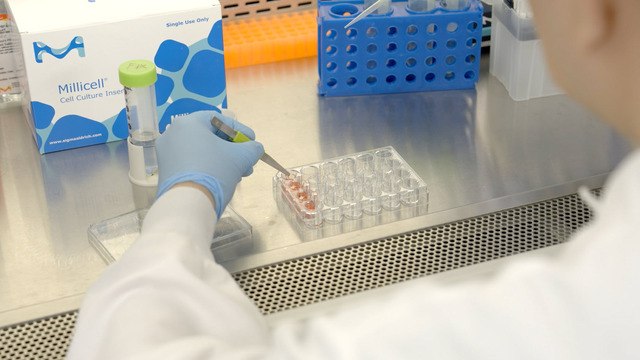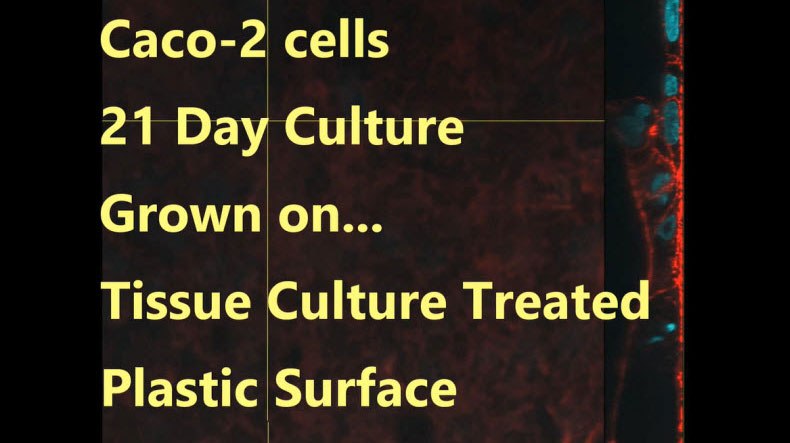Millicell® Cell Culture Inserts & Plates
Millicell® cell culture inserts are designed to maximize biological relevance and user convenience in cell culture applications. In vivo, cells live in a three-dimensional environment and can access nutrients from all directions. In contrast, traditional plastic culture plates force cells to grow on a smooth, two-dimensional surface, leading to flattened nuclei and poor function. Millicell® permeable inserts and plates feature a design that allows access to both the basolateral and apical surfaces of cell layers. This promotes natural, multidimensional growth and provides more relevant in vitro models, leading to more biologically relevant results for applications including toxicity screening, primary and secondary screening, cell signaling, cell proliferation, transport assays, and ADME/Tox drug safety studies.
Check out our how-to video series to see our Millicell® Hanging Inserts in action!
Products
Products
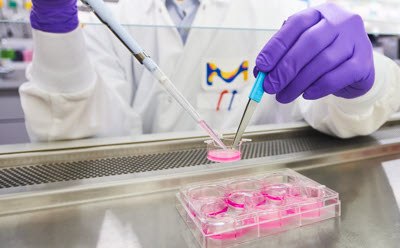
Cell culture with Millicell® hanging inserts
Millicell® Hanging Inserts for Cell Culture
Millicell® hanging inserts make it possible to study both apical and basal surfaces of the cell monolayer, and are excellent tools for co-culture, as there is no disturbance of the outer basolateral cell culture by the presence of insert feet.
- For 2.5D cell culture and chemotaxis
- Unique design facilitates basolateral access and reduces risk of contamination
- Optically clear PET membrane allows for enhanced cell visualization and monitoring of the cell monolayer
- High pore density translucent PET membrane for increased rates of basolateral diffusion of nutrients
- Available in three well sizes (6, 12 and 24-well) and five membrane pore sizes (0.4 µm to 8.0 µm)
- Compatible with fluorophores for fluorescent imaging
Millicell® Standing Inserts for Cell Culture
Millicell® Standing Inserts are free-standing inserts that can rest at the bottom of cell culture plate wells and other vessels, elevated by insert feet. These standing inserts promote the natural growth of suspension and adherent cell lines and are available in three different optimized membranes tailored for specific needs.
- Biopore™ PTFE (polytetrafluoroethylene) membranes are low protein-binding membranes developed for live cell viewing and immunofluorescent applications. The transparent membrane exhibits low background fluorescence compared to other membrane materials and is suitable for attachment-dependent cells when coated with an extracellular matrix.
- MF-Millipore™ MCE (mixed cellulose esters) membranes are Triton®-free and can be used for cell surface receptor, in vitro toxicology, microbial attachment, and polarized uptake assays.
- Isopore™ PCF (polycarbonate) membranes are hydrophilic and tissue culture-treated to allow growth of adherent phenotype cells without the use of extracellular coating matrix (ECM). The high pore density allows for maximum diffusion in drug transport and uptake assays.
Millicell® Organotypic Standing Inserts are designed for superior study of three-dimensional explant structures.
- For high cell viability and superior study of three-dimensional explant structures
- Shorter profile allows inserts to fit inside a standard petri dish
- Optically clear Biopore™ (PTFE) membrane supports high viability and excellent trans-membrane oxygen transport, and is optimized for long-term explant maintenance
Millicell® Plate Assemblies
Millicell®-24 and Millicell®-96 Plate Assemblies enable cell growth, feeding, and analysis in one membrane-bottom plate optimized to grow and sustain high-integrity cell monolayers. These plates can be used manually or with automated cell seeding, feeding, and washing systems. Their thoughtful design improves function with seed-and-feed systems, automated liquid handling systems, and transepithelial electrical resistance (TEER) measurement instruments.
- Complete system with a multi-well membrane-bottom plate, single-well or multi-well receiver tray, and lid
- Apical assist protects the cell monolayer and allows for easier pipetting and basolateral access
- Available in a variety of polyethylene terephthalate (PET) membrane pore sizes.
- Teardrop-shaped receiver wells eliminate air bubbles
- Raised well edges for improved tape sealing and large font labeling for easy well identification
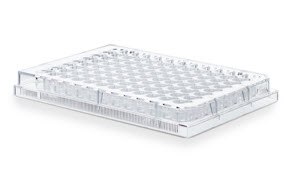
Millicell® Ultra-Low Attachment (ULA) Plates and Millicell® Microwell Plates
Millicell® ULA plates are reliable 3D cell culture tools that promote scaffold free self-assembly of spheroids. The 96-well U bottom plates are compatible with analysis and brightfield and fluorescence imaging as the wells have high optical clarity. The non-cytotoxic, stable, and non-adhesion surface of Millicell® ULA plates support high throughput spheroid assembly.
- Promote uniform single spheroid/EB formation in each well
- Spheroid formation and analysis in the same plate
- Pre-coated with a non-binding surface for cells to facilitate natural spheroid formation
- Plates are compatible with liquid robotic system
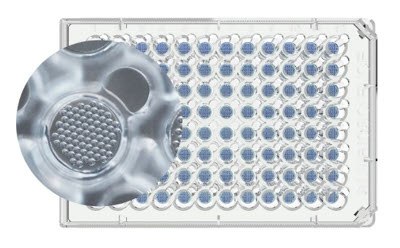
Millicell® Microwell plates are ready-to-use 3D culture tools for high throughput and reproducible organoid culture. Based on an array of ultra-dense U-bottom shaped microwells (μW), single organoids are generated in each microcavity and grown in a pre-cast hydrogel without a solid extracellular matrix. With multiple configurations and microwell diameters available, Millicell® Microwell plates fit your organoid application needs.
- Plates contain polyethylene glycol (PEG) hydrogel in the microwells
- Homogeneous organoids form in one focal plane for high throughput imaging
- Up to hundreds of microwells in a single well scale up organoid generation for high throughput applications
- SBS standard plate format for easy implementation of standardized organoid culture, screening applications, and automation workflows.
How to Select a Cell Culture Insert
Recommended membrane material and pore sizes for Millicell® cell culture inserts and plates are based on cell type and application.
- CM = Biopore™ hydrophilic PTFE membrane
- HA = MF-Millipore™ mixed cellulose esters membrane
- PCF = Isopore™ polycarbonate membrane
- PET = PET (polyethylene terephthalate)
Millicell® EZ Slides
Millicell® EZ Slides can be used to culture, fix, stain and view your cells all in one device. There’s no need to tediously move cover slips from your culture dish to a slide, or to remove the media chamber from the slide prior to fixing or staining. Easily remove the chamber structure without worrying about breaking slides or ruining cell layers. Acquire data simply and quickly with Millicell® EZ Slides.
- Breakable tabs for easy well removal
- No tools required to remove wells from slide
- No adhesive used to attach wells to slide
- No leaky wells
- Polypropylene wells facilitate fixing and staining with wells still attached, allowing different probes in wells
- Slide holder protects slide from damage
Millicell® HY Flasks
Millicell® HY Flasks are innovative multilayer cell culture flasks that support uniform, consistent cell growth for high cell recovery. Manufactured with multiple identical layers, these flasks maximize cell culture surface area for the highest yields, while saving incubator space.
- Save time spent passaging cells
- Save costs associated with media, cells, and reagents
- Consistently high cell yields
- Uniform health across all layers
- Easy transition from single-layer cell culture flasks
- Fits under microscopes for monitoring cell health and confluency
- Stackable design saves incubator space
Looking for more information on cell culture filter plates? Check out our wide range of MultiScreen® filter plates.
Related Resources
- Article: Alternative High-Yield Cell Culture Systems
Solutions for high-yield cell culture scale-up applications including multi-layered flasks (HyperFlasks/CellStacks), roller bottles, spinner and shaker flasks. Free ECACC handbook download.
- Brochure: Multiply Your Success MultiScreen® and Millicell® Filter Plates for Assay Development
This guide for pharmaceutical development, discovery research, molecular biology and sample preparation includes products for screening and cell culture. These products provide proven solutions for a range of applications and are backed by extensive technical support.
- Data Sheet: Millicell® Inserts and Plates
The research needed to narrow the gap between in vitro and in vivo, or 2D and 3D, cell environments has never been greater. Our sixty-plus year legacy of precision engineered filtration and cell culture expertise continues to provide the modern tools needed to support cell growth that is more predictive of natural cellular behavior.
- Flyer: Discover a Better Cell Culture Insert
Millicell® cell culture inserts and plates provide a permeable support for cell growth, allowing cells access to media and nutrients from the apical and basolateral sides. This feature more closely mimics the in vivo cellular environment of cells compared to conventional seeding on polystyrene plates.
- Protocol: Generating Organotypic 3D Skin Cultures as an In-Vitro Model of the Human Epidermis
3D cell culture protocol for generating epidermal human skin tissue using primary human keratinocytes, dermal fibroblasts, and collagen-coated transwell inserts.
- Protocol: T-Cell Migration Assays Using Millicell® Cell Culture Inserts
Learn how to perform cell migration assays in vitro using Millicell® hanging cell culture inserts and the suspension T-cell lines Jurkat and primary CD4+ cells. Monitor migration by flow cytometry and EZ-MTT assays.
- Article: Barrier Formation and Permeability Assays using Millicell® Hanging Cell Culture Inserts
How to set up barrier formation and permeability assays using cell culture inserts and TEER measurements.
- Article: Cell Migration and Invasion Assay Guidance using Millicell® Cell Culture Inserts
How to set up cell migration assays using cell culture inserts.
- Article: Using Immortalized 16HBE14o- Human Bronchial Epithelial Cell Lines to Model Respiratory Lung Diseases
16HBE14o- human bronchial epithelial cells used to model respiratory epithelium for the research of cystic fibrosis, viral pulmonary pathology (SARS-CoV), asthma, COPD, effects of smoking and air pollution. See over 5k publications.
To continue reading please sign in or create an account.
Don't Have An Account?